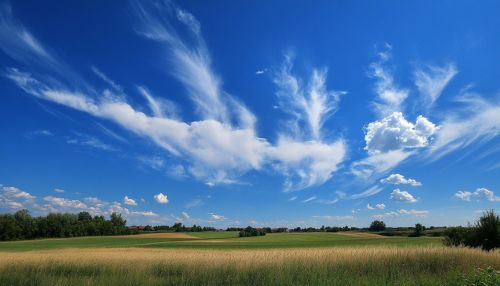Stratospheric Ozone Layer and UV Radiation Science
Introduction
The stratospheric ozone layer is a crucial component of Earth's atmosphere, playing a vital role in protecting life on the planet by absorbing the majority of the Sun's harmful ultraviolet (UV) radiation. This article delves into the science behind the stratospheric ozone layer, its interaction with UV radiation, and the implications for environmental and human health.
Structure and Composition of the Ozone Layer
The ozone layer is located in the lower portion of the stratosphere, approximately 10 to 50 kilometers above Earth's surface. It is composed primarily of ozone (O₃) molecules, which are formed through photochemical reactions involving oxygen (O₂) and UV radiation. The concentration of ozone varies with altitude, peaking between 15 and 35 kilometers.
Formation and Destruction of Ozone
Ozone formation occurs when UV radiation splits an O₂ molecule into two oxygen atoms, which then react with other O₂ molecules to form ozone. This process is known as the Chapman cycle. Ozone destruction, on the other hand, occurs through natural processes and human-induced activities. The primary natural process involves the reaction of ozone with atomic oxygen, while human activities have introduced chlorofluorocarbons (CFCs) and other ozone-depleting substances (ODS) that accelerate ozone breakdown.
Interaction with Ultraviolet Radiation
The interaction between the ozone layer and UV radiation is a complex process that significantly impacts the Earth's environment. The ozone layer absorbs most of the Sun's high-energy UV-C and UV-B radiation, allowing only a small fraction of UV-A to reach the Earth's surface.
Types of Ultraviolet Radiation
UV radiation is categorized into three types based on wavelength: UV-A (320-400 nm), UV-B (280-320 nm), and UV-C (100-280 nm). UV-C is the most energetic and harmful, but it is completely absorbed by the ozone layer and the atmosphere. UV-B is partially absorbed, while UV-A reaches the Earth's surface almost unimpeded.
Effects of UV Radiation
Excessive exposure to UV radiation can have detrimental effects on living organisms. In humans, it can lead to skin cancer, cataracts, and immune system suppression. In the environment, it affects the growth and development of phytoplankton, terrestrial plants, and aquatic ecosystems.
Ozone Layer Depletion
Ozone layer depletion refers to the thinning of the ozone layer, primarily due to human activities. The release of ODS, such as CFCs, halons, and carbon tetrachloride, into the atmosphere has led to significant ozone loss, particularly over the polar regions.
Mechanisms of Ozone Depletion
The primary mechanism of ozone depletion involves the release of chlorine and bromine atoms from ODS. These atoms catalytically destroy ozone molecules in a series of reactions, leading to the formation of an ozone hole, particularly over Antarctica.
Environmental and Health Implications
The depletion of the ozone layer results in increased levels of UV-B radiation reaching the Earth's surface, with profound implications for human health and the environment. It contributes to higher incidences of skin cancer and cataracts, as well as adverse effects on ecosystems and biodiversity.
Monitoring and Protection Efforts
Efforts to monitor and protect the ozone layer have been ongoing since the discovery of its depletion in the late 20th century. The Montreal Protocol, an international treaty adopted in 1987, has been instrumental in phasing out the production and consumption of ODS.
Satellite and Ground-Based Monitoring
Satellite instruments, such as the Total Ozone Mapping Spectrometer (TOMS) and the Ozone Monitoring Instrument (OMI), provide comprehensive data on ozone distribution and trends. Ground-based networks, including the Dobson spectrophotometer network, complement satellite observations by providing high-resolution data.
Successes and Challenges
The Montreal Protocol has been successful in reducing the levels of ODS in the atmosphere, leading to signs of recovery in the ozone layer. However, challenges remain, including the illegal production of CFCs and the potential impact of climate change on ozone recovery.
Future Directions in Ozone Research
Research into the stratospheric ozone layer and UV radiation continues to evolve, with a focus on understanding the complex interactions between ozone, climate change, and human activities.
Climate Change and Ozone
Climate change can influence the ozone layer through changes in temperature, atmospheric circulation, and the distribution of ozone-depleting substances. Understanding these interactions is crucial for predicting future trends in ozone recovery.
Emerging Technologies and Strategies
Advancements in technology, such as the development of new satellite instruments and the use of artificial intelligence in data analysis, are enhancing our ability to monitor and protect the ozone layer. Strategies to mitigate the impact of climate change on ozone recovery are also being explored.
Conclusion
The stratospheric ozone layer plays a critical role in shielding the Earth from harmful UV radiation. While significant progress has been made in addressing ozone depletion, ongoing research and international cooperation are essential to ensure the continued recovery and protection of this vital component of the Earth's atmosphere.


